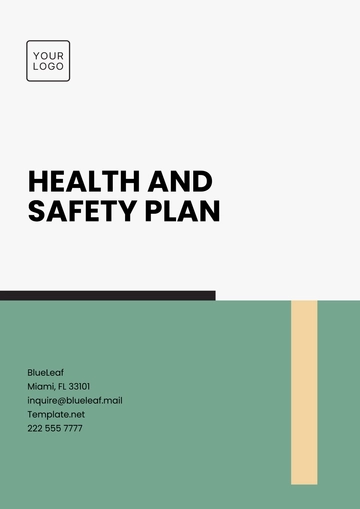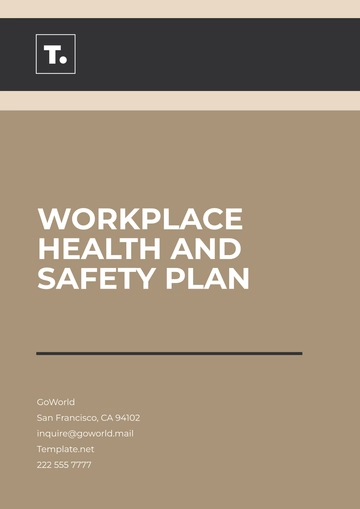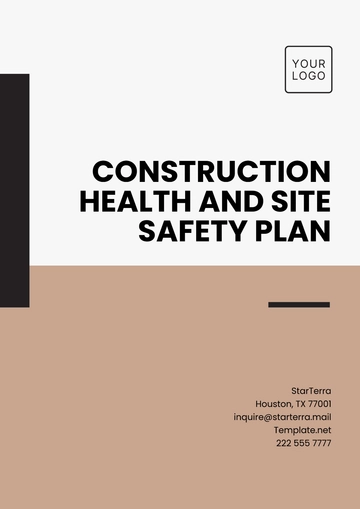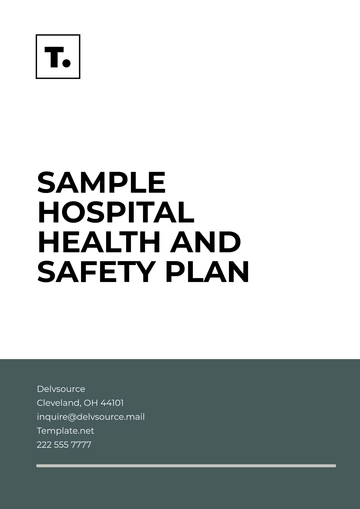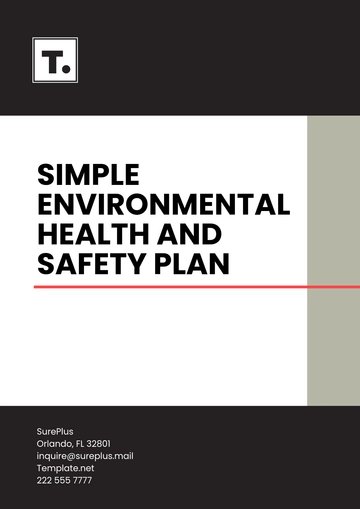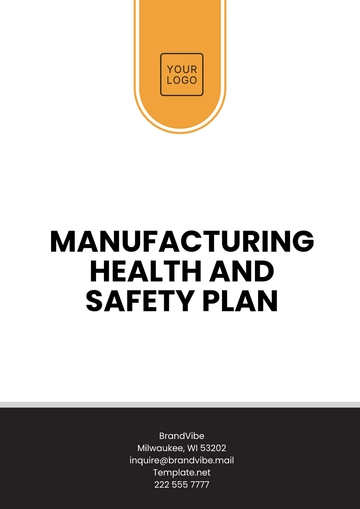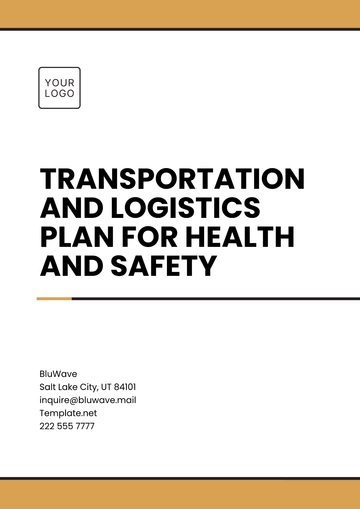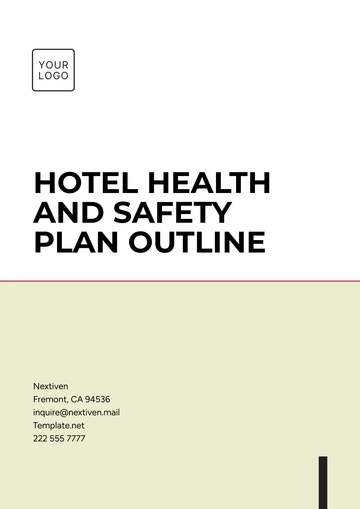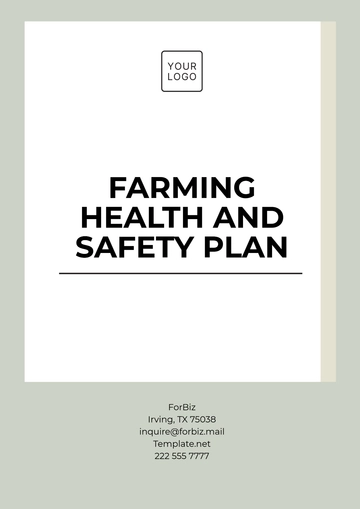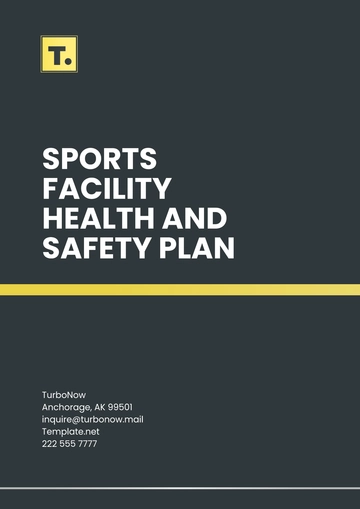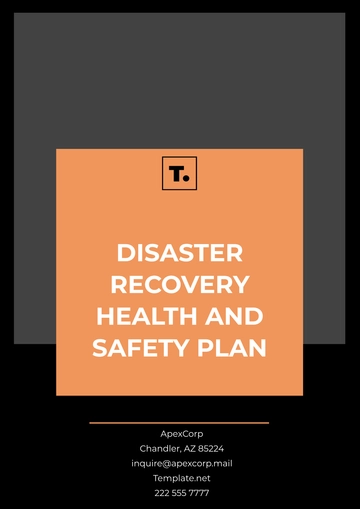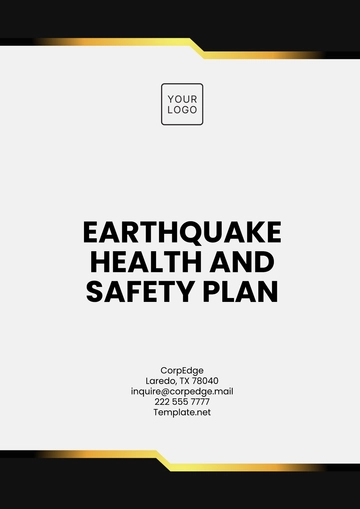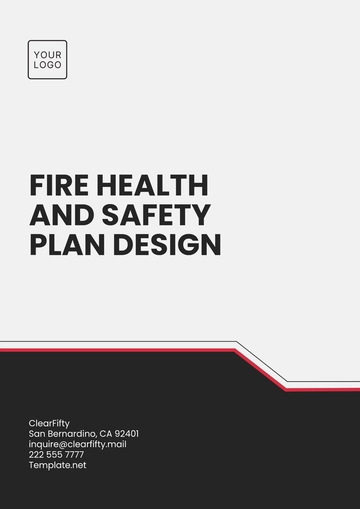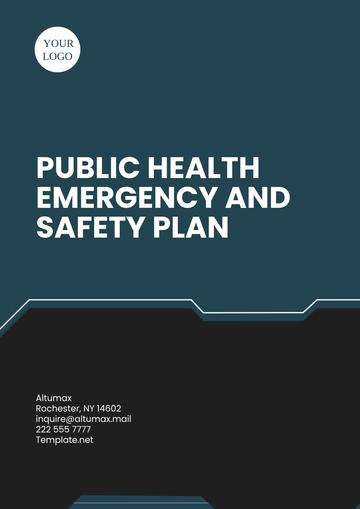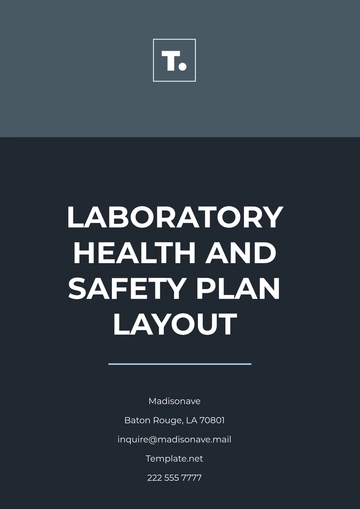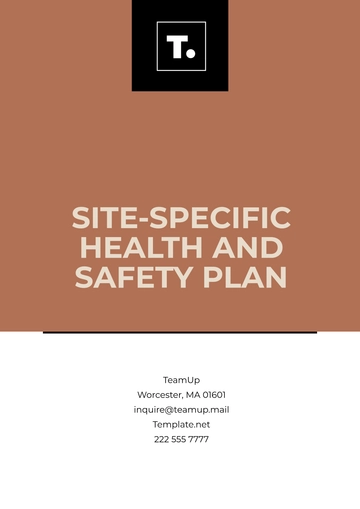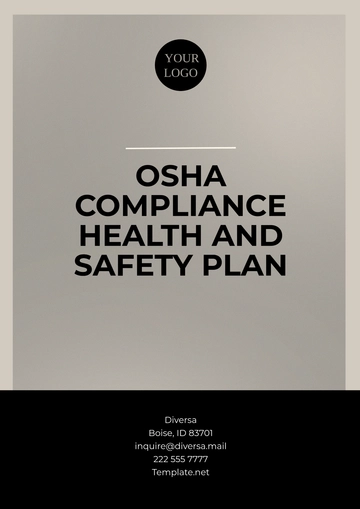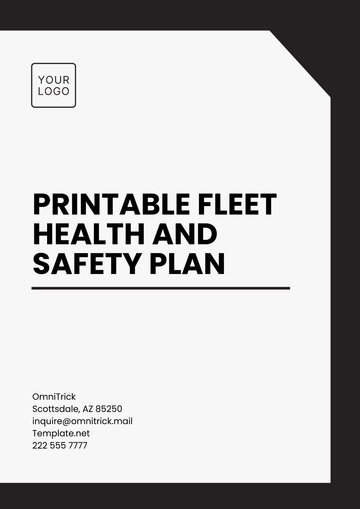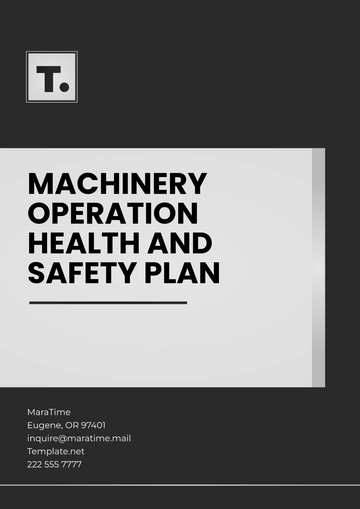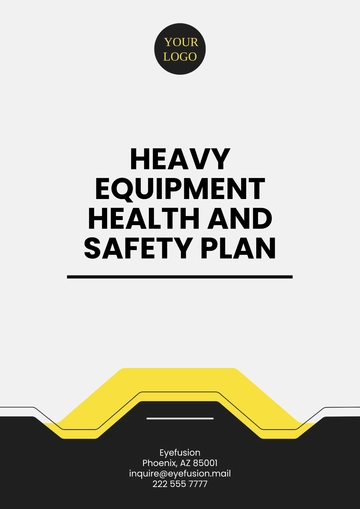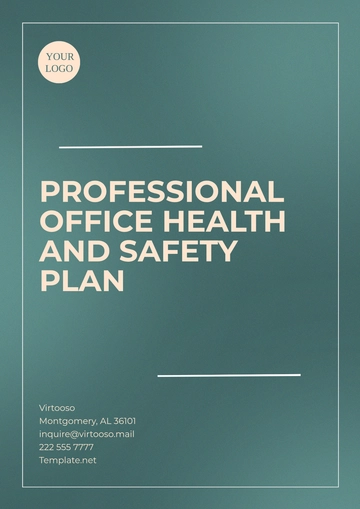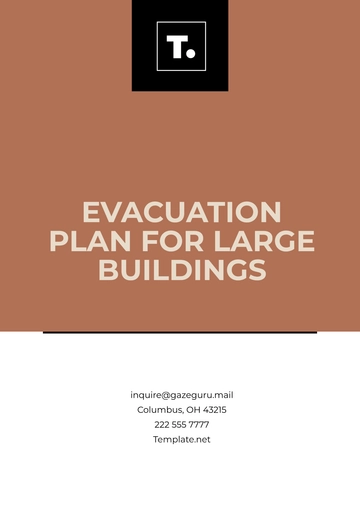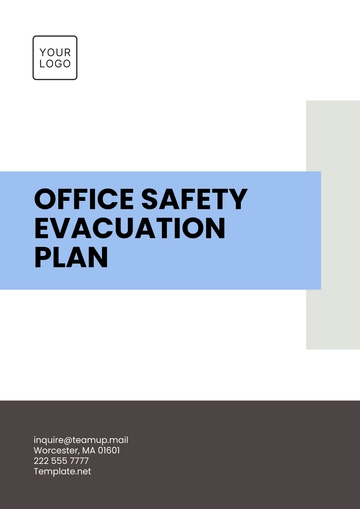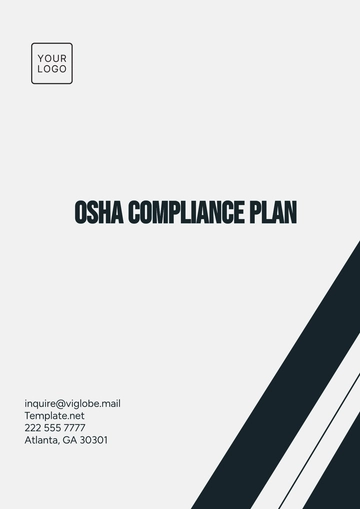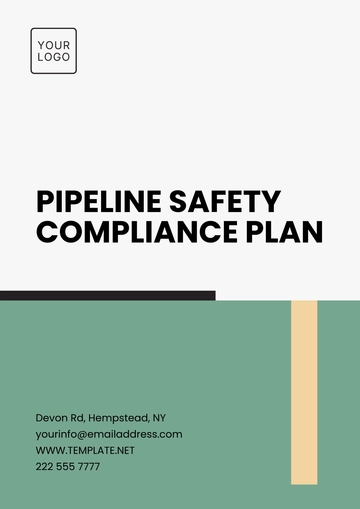Free Roofing Safety Plan
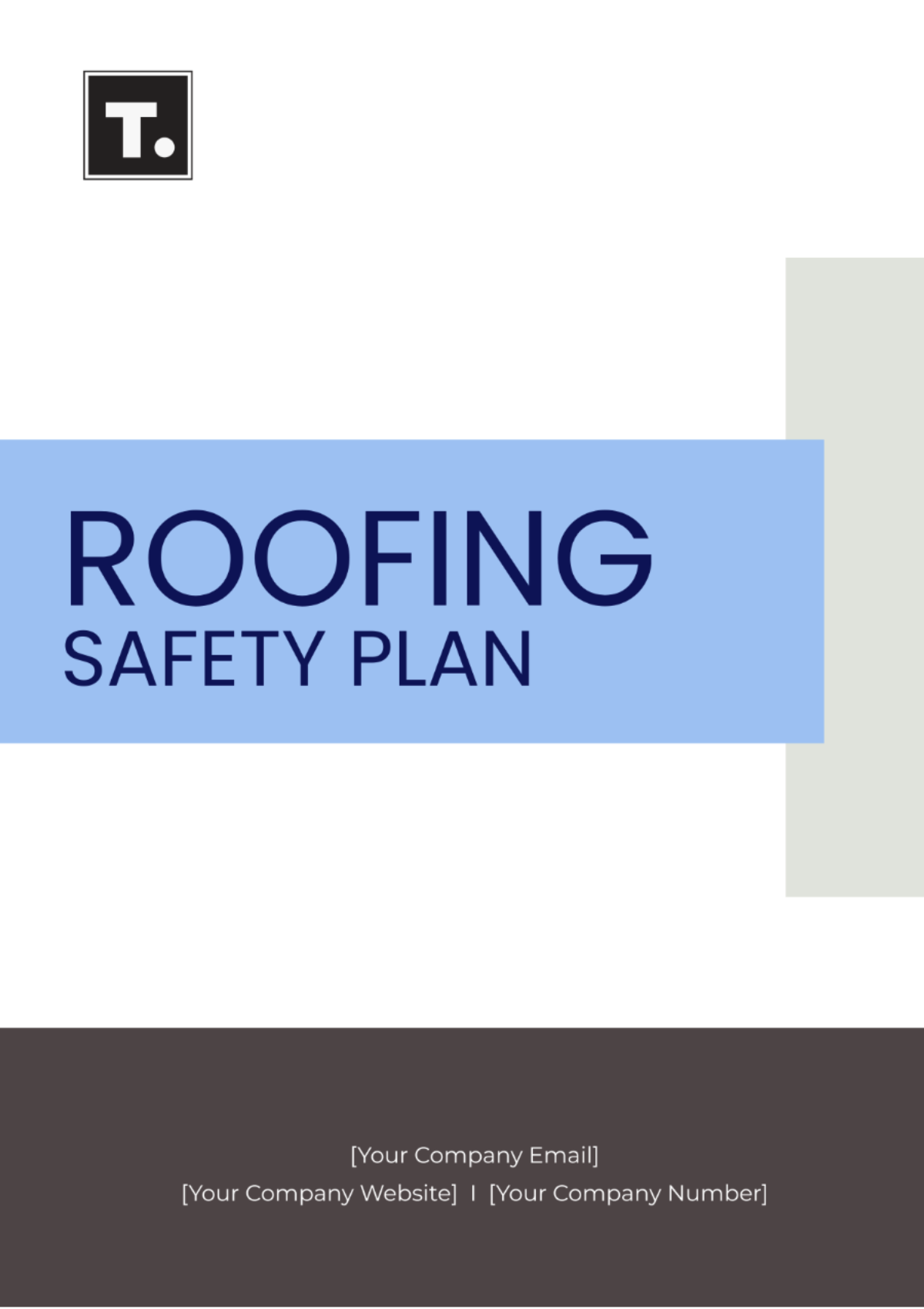
Introduction
This Roofing Safety Plan aims to ensure the safety and well-being of all workers involved in roofing activities at [Your Company Name]. The plan is designed to provide clear procedures, promote personal responsibility, and encourage a safety-first mindset.
Company Information
A. Company Details
[Your Company Name]
[Your Company Address]
[Your Company Number]
[Your Email]
B. Emergency Contacts
Emergency Coordinator: [Coordinator Name]
Contact Number: [Coordinator Number]
Local Emergency Services: 911
II. Hazard Assessment
1. Roof Inspection
Conduct a thorough inspection of the roof before work begins to identify potential hazards such as weak spots, unstable surfaces, and electrical hazards.
2. Weather Conditions
Monitor weather forecasts regularly and postpone work in adverse weather conditions such as rain, wind, or lightning.
3. Equipment Inspection
Inspect all tools, equipment, and personal protective equipment (PPE) before use to ensure they are in good working condition.
III. Fall Protection
1. Guardrails and Toe Boards
Install guardrails and toe boards around roof edges to prevent falls.
Ensure guardrails meet regulatory height requirements and are properly secured.
2. Personal Fall Arrest Systems (PFAS)
Provide and require the use of PFAS for workers operating at heights.
Conduct regular inspections of PFAS and ensure proper fit and functionality.
3. Safety Nets
Install safety nets below roof edges as an additional measure to catch falling workers or materials.
IV. Safe Work Practices
1. Proper Training
Provide comprehensive training to all workers on safe roofing practices, hazard recognition, and emergency procedures.
Ensure workers are trained in the proper use of equipment and fall protection systems.
2. Ladder Safety
Use ladders with non-slip feet and secure them properly to prevent shifting or slipping.
Train workers on proper ladder safety practices, including maintaining three points of contact and avoiding overreaching.
3. Material Handling
Establish safe procedures for handling and moving roofing materials, such as using mechanical lifts or team lifting for heavy items.
V. Electrical Safety
1. Electrical Hazards
Identify and mark all electrical hazards on the roof, such as power lines and electrical equipment.
Ensure workers are trained to recognize and avoid electrical hazards.
2. Lockout/Tagout Procedures
Implement lockout/tagout procedures for electrical equipment to prevent accidental energization.
3. Ground Fault Circuit Interrupters (GFCIs)
Use GFCIs for all electrical equipment used on the roof to protect workers from electrical shocks.
VI. Emergency Preparedness
1. Emergency Action Plan
Develop an emergency action plan that includes procedures for addressing accidents, injuries, and medical emergencies.
Ensure all workers are trained in emergency procedures and know how to access emergency services.
2. First Aid Kits
Keep fully stocked first aid kits readily available on-site and ensure workers know their location.
Train designated workers in first aid and CPR.
3. Communication
Establish a communication system for workers to report hazards, injuries, or emergencies promptly.
VII. Supervision and Enforcement
1. Site Supervision
Assign competent supervisors to oversee roofing operations and enforce safety procedures.
Conduct regular safety inspections and audits to ensure compliance with safety protocols.
2. Disciplinary Action
Implement a disciplinary policy for workers who fail to follow safety procedures.
Encourage a culture of accountability and emphasize the importance of safety compliance.
3. Safety Meetings
Hold regular safety meetings to discuss safety concerns, review incidents, and reinforce safe work practices.
X. Encouragement and Support
Recognize that safety is a collective responsibility, and every individual has the power to contribute to a safer work environment. Feel empowered to speak up about any safety concerns and know that support is always available.
Remember, your safety and well-being are the highest priorities. Let’s work together to ensure a secure roofing job every day.
- 100% Customizable, free editor
- Access 1 Million+ Templates, photo’s & graphics
- Download or share as a template
- Click and replace photos, graphics, text, backgrounds
- Resize, crop, AI write & more
- Access advanced editor
Introducing the Roofing Safety Plan Template from Template.net! Crafted with precision, it's your blueprint for safety excellence. Fully editable and customizable, this template empowers you to tailor safety protocols to your unique project needs. Plus, it's compatible with our Ai Editor for seamless customization. Elevate safety standards effortlessly!
You may also like
- Finance Plan
- Construction Plan
- Sales Plan
- Development Plan
- Career Plan
- Budget Plan
- HR Plan
- Education Plan
- Transition Plan
- Work Plan
- Training Plan
- Communication Plan
- Operation Plan
- Health And Safety Plan
- Strategy Plan
- Professional Development Plan
- Advertising Plan
- Risk Management Plan
- Restaurant Plan
- School Plan
- Nursing Home Patient Care Plan
- Nursing Care Plan
- Plan Event
- Startup Plan
- Social Media Plan
- Staffing Plan
- Annual Plan
- Content Plan
- Payment Plan
- Implementation Plan
- Hotel Plan
- Workout Plan
- Accounting Plan
- Campaign Plan
- Essay Plan
- 30 60 90 Day Plan
- Research Plan
- Recruitment Plan
- 90 Day Plan
- Quarterly Plan
- Emergency Plan
- 5 Year Plan
- Gym Plan
- Personal Plan
- IT and Software Plan
- Treatment Plan
- Real Estate Plan
- Law Firm Plan
- Healthcare Plan
- Improvement Plan
- Media Plan
- 5 Year Business Plan
- Learning Plan
- Marketing Campaign Plan
- Travel Agency Plan
- Cleaning Services Plan
- Interior Design Plan
- Performance Plan
- PR Plan
- Birth Plan
- Life Plan
- SEO Plan
- Disaster Recovery Plan
- Continuity Plan
- Launch Plan
- Legal Plan
- Behavior Plan
- Performance Improvement Plan
- Salon Plan
- Security Plan
- Security Management Plan
- Employee Development Plan
- Quality Plan
- Service Improvement Plan
- Growth Plan
- Incident Response Plan
- Basketball Plan
- Emergency Action Plan
- Product Launch Plan
- Spa Plan
- Employee Training Plan
- Data Analysis Plan
- Employee Action Plan
- Territory Plan
- Audit Plan
- Classroom Plan
- Activity Plan
- Parenting Plan
- Care Plan
- Project Execution Plan
- Exercise Plan
- Internship Plan
- Software Development Plan
- Continuous Improvement Plan
- Leave Plan
- 90 Day Sales Plan
- Advertising Agency Plan
- Employee Transition Plan
- Smart Action Plan
- Workplace Safety Plan
- Behavior Change Plan
- Contingency Plan
- Continuity of Operations Plan
- Health Plan
- Quality Control Plan
- Self Plan
- Sports Development Plan
- Change Management Plan
- Ecommerce Plan
- Personal Financial Plan
- Process Improvement Plan
- 30-60-90 Day Sales Plan
- Crisis Management Plan
- Engagement Plan
- Execution Plan
- Pandemic Plan
- Quality Assurance Plan
- Service Continuity Plan
- Agile Project Plan
- Fundraising Plan
- Job Transition Plan
- Asset Maintenance Plan
- Maintenance Plan
- Software Test Plan
- Staff Training and Development Plan
- 3 Year Plan
- Brand Activation Plan
- Release Plan
- Resource Plan
- Risk Mitigation Plan
- Teacher Plan
- 30 60 90 Day Plan for New Manager
- Food Safety Plan
- Food Truck Plan
- Hiring Plan
- Quality Management Plan
- Wellness Plan
- Behavior Intervention Plan
- Bonus Plan
- Investment Plan
- Maternity Leave Plan
- Pandemic Response Plan
- Succession Planning
- Coaching Plan
- Configuration Management Plan
- Remote Work Plan
- Self Care Plan
- Teaching Plan
- 100-Day Plan
- HACCP Plan
- Student Plan
- Sustainability Plan
- 30 60 90 Day Plan for Interview
- Access Plan
- Site Specific Safety Plan
